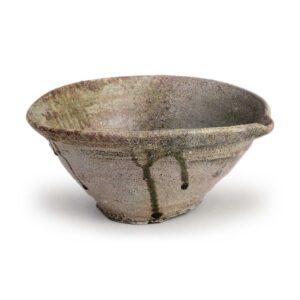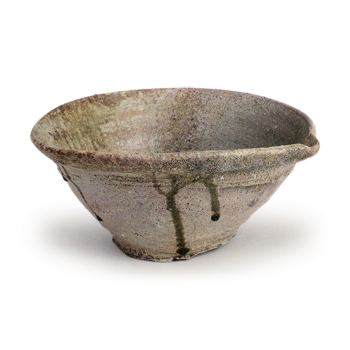
13th century
Height 12.4cm, Bowl diameter 31.0cm, Bottom diameter 13.6cm
Tokoname City Ceramic Research Institute
This type of large bowl, called a taihei-bachi or kataguchibachi, is a new type of ground bowl that appeared around the end of the 11th century, when the transition from ash-glazed pottery to mountain tea bowls occurred, and has a form common to medieval kilns. While kilns in western Japan and the Hokuriku region began to carve grids on the interior surface around the middle of the Kamakura period (1192-1333), the characteristic feature of this bowl is that it did not have grids until the late Muromachi period (1333-1573) in various kilns of the 瓷器 type in the Tokai region, such as Seto and Tokoname. This piece is made of coarse white clay containing pebbles and fired by reduction firing, with a bright green natural glaze running over the interior and exterior surfaces of the grayish-white vessel. Although it still has an elevated base, the rounded edge of the mouth rim and the loss of a bulge at the waist suggest that it should be dated to the middle of the Kamakura period.



